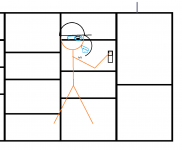william.broach@cwservices
Member
- Location
- Dayton, Oh
- Occupation
- Electrical Trainer
We've all learned the left hand rule for opening and closing disconnects. Is this truly the best practice with with the newer PPE requirements (Face Protection. Face shields shall have an arc rating suitable for the arc flash exposure. Face shields with a wrap-around guarding to protect the face, chin, forehead, ears, and neck area shall be used)? I believe facing the handle on the hinge side, throwing the handle with left hand while eyes closed looking towards the floor and exhaling while throwing to be a better practice. This will help direct the blast away from the EE and help prevent inhalation injury.... Comments please.



